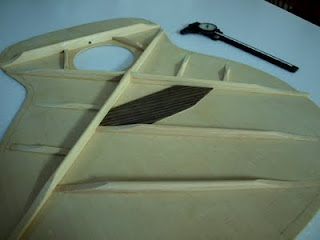 Having braced the top, it's time to temporarily suspend my excitement and spend some time on the rims. For me, this is perhaps the least inspiring stage of construction and the reason I find it preferable to have a ready-made stock of head blocks, tail blocks and kerfed lining strips which I've prepared in batches over the preceding months. With a supply of blocks and linings on hand, I can make short work of fitting them to the guitar's sides and move on quickly to more interesting tasks.
Having braced the top, it's time to temporarily suspend my excitement and spend some time on the rims. For me, this is perhaps the least inspiring stage of construction and the reason I find it preferable to have a ready-made stock of head blocks, tail blocks and kerfed lining strips which I've prepared in batches over the preceding months. With a supply of blocks and linings on hand, I can make short work of fitting them to the guitar's sides and move on quickly to more interesting tasks.
I laminate my tail blocks using three layers of wood, the middle layer of which has its grain oriented at right angles to the two outer layers, parallel with the grain of the sides. For the little additional effort involved, I can feel confident that the block will remain intact and a side crack will be avoided should the guitar ever be dropped on its end pin.
In the belief that setting modest targets fuels motivation and sustains momentum, I'm setting myself the goal of attaching the head and tail blocks and installing the kerfed linings in the week ahead.
In the belief that setting modest targets fuels motivation and sustains momentum, I'm setting myself the goal of attaching the head and tail blocks and installing the kerfed linings in the week ahead.
Cheers
Pete














